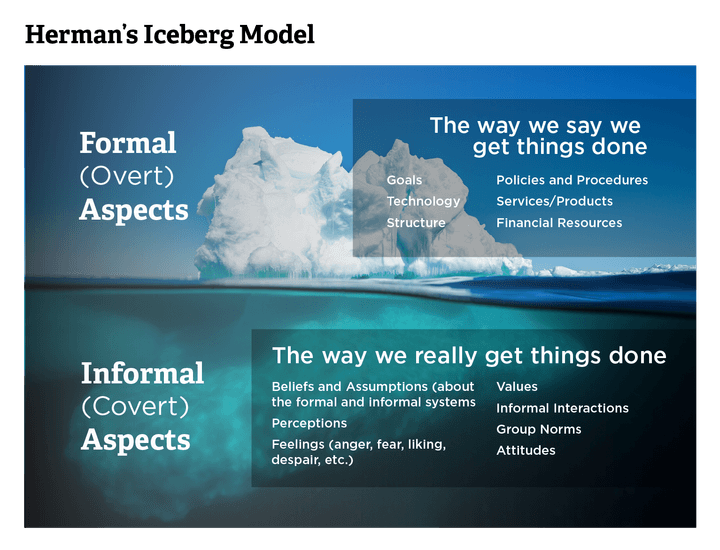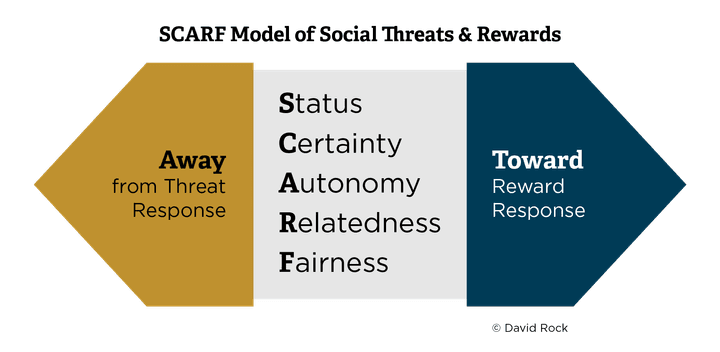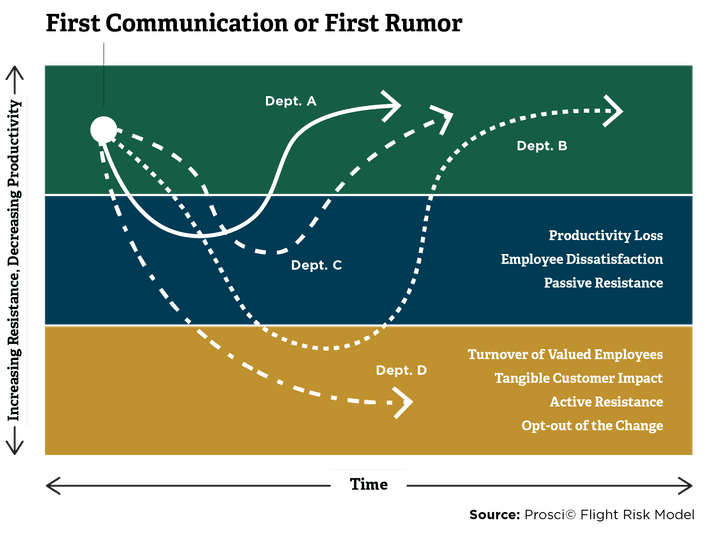What does the traditional dark-suited banker, the super-committed Japanese car manufacturing worker, and the Gen Z chinos-adorned high-tech night owl all have in common?
Believe it or not, this trio actually has a lot in common since they all work for large hierarchical corporations with similar structures and modus operandi. Just for fun, let’s imagine for a moment a harmless job swap. Put the chinos on the banker, who now sleeps during the day and geeks his way through the night. Give the dark suit and client bonding cordialities to the Gen Z tech whiz. Okay, what just happened in your head?
I hope you’re smiling because THAT is the power of culture.
# What is organizational culture and why does it matter?
Organizational culture can be described as the human character of an organization. It is the complex go-to practices and attitudes that are so ingrained in the way a company is perceived to operate, that they become part of its identity.
A company’s culture encompasses the collective mentality and conduct of the workforce, including attitudes, beliefs, rules, customs, norms, perceptions, expectations, opinions, and habits. As prominent organizational consultants Terry Deal and Allan Kennedy said: “Culture is the way things we do things around here.”
A company’s culture unconsciously influences the decisions of workers (in all roles), and as you already know, decisions have a direct impact on results.
Gallup’s recent studies show that 6 in 10 employees feel disconnected from their company's purpose. And this is despite the fact, I might add, that we have seen expensive value statements bursting colorfully onto company walls and web pages.

As the above model illustrates, what is visible in an organization’s culture is only the tip of the iceberg. The deeper drivers of collective decisions lie submerged in subconscious behaviors and attitudes. Yet, many large companies do not have strategic goals with a budget allocated to culture development, maintenance, growth, and assessment as they have for other strategic business transformation programs. Many leaders assume that since the business transformation program has budgeted for a change manager resource, culture change is also taken care of. However, most organizational leaders are not clear on the difference between change management and culture change.
# Why are CEOs and CFOs reluctant to invest in culture?
Many executives got to where they are today because they are naturally analytical, responsible, and action-oriented. They are likely fluent in the language of data points and spreadsheets. To them, numbers carry tremendous weight. They confidently allocate their budgets to things where it’s easy to “do the math.” For example, Problem A increases costs by $1 million per year. Solution X costs $1 million, takes 1 year to implement, and will reduce costs by $5 million every year for 5 years. It’s easy to build this business case with a reliable and predictable return on investment.
Oftentimes, organizations don’t do a good job of taking this into consideration when building the case for culture transformation.
# How do you know what you’re buying when you invest in culture?
On the other hand, organizations’ human capital champions understand fully that there’s a problem culturally because they have collected firsthand correlating staff experiences, sentiments, and perceptions through human conversations, staff surveys, and the Employee Assistance Program. They are trying to get leaders to pay attention and urgently do something (like invest in a culture transformation program). This role-play scenario between finance and HR leaders illustrates the types of questions executives ask prior to making investment decisions:
- CFO: What’s the compelling case driving this culture transformation program proposal?
- CHRO: Well, 63% of staff who participated in the staff survey self-assessment reported low morale.
- CFO: Self-assessment sounds subjective; do we have numbers on what 63% low morale is costing us in dollars?
- CHRO: We can’t quantify morale at this stage; however, we do know that it directly correlates with productivity, engagement, performance, and overall effectiveness.
- CFO: It sounds a bit like guesswork, for example, wouldn’t there be external factors affecting their morale that we cannot influence? How would we hone in on what a culture transformation program will deliver within a limited timeframe and budget?
- CHRO: We won’t know the answer to that until we have conducted a cultural audit to define the current culture in terms of strengths and weaknesses and establish the root cause. We also need to determine our aspirational culture based on the company’s purpose. The aim is to develop a strong company culture that aligns company members’ experiences with our purpose, strategy, core values, and results.
- CFO: So, at this stage, outcomes seem unpredictable, which makes me nervous. How much will it cost?
- CHRO: We would need to get an estimate from an external company for a culture audit. The audit would span six months and help us understand the root cause of low morale and provide a proposed strategy for improvement with associated costs over time.
- CFO: What is the return on investment in dollars?
- CHRO: The ROI is staff retention. We get to keep our good people.
# How do corporate leaders’ typical cultural attributes work against them in this scenario?
According to David Rock’s SCARF Model of “responsible corporate citizen” needs (Status, Certainty, Autonomy, Relatedness, Fairness), the above proposal unconsciously activates the threat response. Bear with me for a minute as we geek through the neuroscience theory to understand why. Place yourself in the shoes of a CEO or CFO and imagine what threats to the following may cost you on a personal level:
- Status is about your reputation based on the span of your career
- Certainty is your ability and instinct to predict the future
- Autonomy provides a sense of control over expected challenging situations
- Relatedness refers to your network of respected peers you have spent your entire career building and maintaining
- Fairness is a perception of fair treatment of people

The SCARF model is built on these central ideas:
- The brain interprets interpersonal threats as though they were physical threats to one’s survival
- Decision-making, problem-solving, and partnering with others are incapacitated by a significant threat response to SCARF aspects
- Perceived threats to status, certainty, autonomy, relatedness, and fairness will be unconsciously eradicated
You can see now why the scenario above may be difficult for the typical corporate leader-brain to agree to. Simply put, HR leaders are asking accountable executives to go against traditionally risk-averse, hierarchical, responsible corporate culture and take a leap of faith.
# An effective approach to acquiring support for culture strategy alignment initiatives
Having implemented change programs with significant cultural impacts at three large utility companies across Australia and the United States, an effective approach starts with empathy. Understanding that corporate leaders are human and have fight-or-flight nervous systems just like everyone else is key. Craft a message that uses a rationale that meets leaders where they are. It will increase their openness to enter discussions about culture.
If you want leaders to prioritize culture transformation with the same urgency as business or digital transformations, you need to make a rational case. You can begin by setting targets for known risk mitigation, as well as performance enhancement.
# Presenting the risk in terms of numbers
In other words, use the risks of not aligning culture with purpose to justify your business case. The dollar and other costs of staff turnover offer more than enough of the data your leadership team needs to safely vote in favor.
Neglecting the negative impacts of “group mentality” on the adoption of business transformation initiatives can lead to a steady decline in morale, well-being, engagement, and productivity. All of which are linked to employee satisfaction and retention. Presenting the cost of turnover at your company makes a compelling case for culture transformation and produces an effective talent retention plan. PROSCI’s Flight Risk Model demonstrates the impact of disengaged workers and staff turnover on productivity and profits.

# The cost of staff turnover
The cost of turnover is extremely high, in fact, replacing an individual employee is conservatively estimated at ranging from one-half to two times an employee's annual salary. For example, a 200-person organization that provides an average salary of $50,000 could have turnover and replacement costs of approximately $1.3 to $5.2 million per year.
In their book Corporate Culture and Performance, John Kotter and James Heskett describe the relationship between culture and performance. Based on a quantitative study of more than 200 companies, they show how shared values and unwritten rules can profoundly enhance economic success. They also suggest that turnover has regretful downstream costs that don’t find their way into a spreadsheet.
Losing good talent due to cultural misalignment with purpose means losing cohesive relationships, valuable knowledge, trusted top performers, creative geniuses, and reliable problem solvers. Additionally, losing employees can break down internal team morale and affect customer relationships.
Gallup recently reported that only “23% of U.S. employees strongly agree that they can apply their organization's values to their work every day, and only 27% strongly agree that they ‘believe in’ their organization's values.” According to the PROSCI flight risk model, that means at least 70% of staff are at risk of leaving their organizations. If you use the above formula to calculate the cost of losing or disengaging 70% of your workforce, it amounts to a massive amount of money lost.
# The cultural characteristics that enhance or inhibit long-term economic performance
Signs of a Performance-Inhibiting Culture
- Employee experience does not align with the company's vision and purpose, resulting in a lack of respect and trust.
- Leaders rebrand in the name of "culture transformation" with vague culture-statement signs that are more marketing than true cultural change.
- Misalignment between stated values and actions. For example, expressing a work-life balance to drive effectiveness but then encouraging teams to work weekends due to staff reduction and budget constraints.
- Lack of front-line autonomy. Workers are micro-managed and not trusted to use their expertise to inform solutions. Supervisors and managers make decisions and tell their teams what to do.
- Resistance to change, resulting in out-of-date, inefficient, and ineffective practices.
Signs of a Performance-Enhancing Culture
- Employee experiences are congruent with the company's purpose, strategy, and core values.
- Leaders make it their mission to understand the required workforce resources (capacity, capability, and tools) to achieve the company strategy.
- Autonomous workers are given the necessary tools, skills, and people, which positively influence morale, engagement, and performance.
- Workers are trusted to solve problems and have opportunities for innovation related to their work processes, removing the need for cascades of managers between executives and teams.
- Workers speak up when things are not working and the organization is willing to be nimble and pivot, failing fast and adapting to the proposed alternate solution.
# What are the impacts of a performance-enhancing culture on the individual and the organization?
When an organization attempts to implement a new strategy or program that happens to be incompatible with central norms and values, they will observe, firsthand, the power of culture.
Forbes reports a strong organizational culture increased the following key performance metrics over a ten-year period:
- 65% greater share-price increase
- 26% less employee turnover
- 100% more unsolicited employment applications
- 20% less absenteeism
- 15% greater employee productivity
- 30% greater customer satisfaction levels.


# What to do next?
How to harness the power of culture at your organization.
- Determine the culture you have today as well as the culture you need to fulfill your organizational strategy.
- Assess the gap between the current culture and your aspirational culture.
- Revise your purpose, values, and behaviors so they support your planned strategic change.
- Identify policies, processes, systems, and practices that block new ways of working and add them to your change plan.
- Create an authentic experience for your company members that align with your aspirational culture.
- Reassess culture transformation periodically to understand what’s working and not working.
- Pivot if needed.
# Conclusion
Recognizing whether your company’s current culture is an asset or a liability is the first step toward developing a better culture. Then, building and sustaining that ideal culture is the forward momentum needed to accelerate company performance. Take a moment and write down one action you can take to get started and outline what support you might need to make it a reality.
Learn more about Propeller's People & Change team and expertise.



